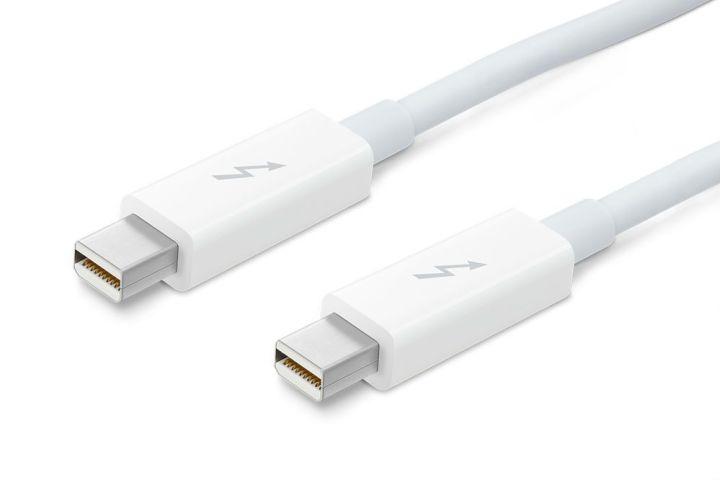Thunderbolt is a type of hardware interface technology that is used to connect various devices to a PC. You’ve probably already encountered Thunderbolt in the form of its distinctive ports and cables — the latest generations use the USB-C connector. That’s the quick definition. But if you’re here, you’re probably looking for a more thorough description of what Thunderbolt is, and why it differs from USB-C.
In this guide, that’s exactly what you’ll get: We’ll go over some of its current iterations and how they compare, how Thunderbolt is different from USB-C, how to identify Thunderbolt ports, and find out the latest on when Thunderbolt 5 will launch.
Thunderbolt 3 vs. Thunderbolt 4

Since Thunderbolt was introduced in 2011, there have been a number of different versions of it. But these days, if you’re shopping for a device that features Thunderbolt’s use, you’re probably looking at Thunderbolt 3 and Thunderbolt 4.
Introduced in 2015, Thunderbolt 3 features a USB-C connector, a max transfer speed of 40GB/s, and up to 15W of power for running accessories. It can also support one 4K display and is compatible with USB4 specification.
Launched in 2020, Thunderbolt 4 is the latest version of its connection technology that’s currently available. Thunderbolt 4 still has the same max transfer speed as Thunderbolt 3: 40Gb/s, but it mandates that as the minimum, whereas for Thunderbolt 3, it’s not enforced. Like Thunderbolt 3, Thunderbolt 4 also has a USB-C connector and offers up to 15W power delivery for accessories. They both offer Thunderbolt Networking as well. But that’s where the similarities between the two pretty much end.
Unlike Thunderbolt 3, Thunderbolt 4 can support two 4K displays and is rated as “compliant” for USB4 specification. Thunderbolt 4 also has double the PCIe SSD bandwidth speed (32 Gb/s) of Thunderbolt 3 (16 Gb/s).
Is Thunderbolt the same as USB-C?

No. Though Thunderbolt has recently incorporated the use of USB-C connectors, they’re still different connection technologies. So just because Thunderbolt 3 and 4 ports are designed for use with USB-C connectors, not all USB-C ports are designed to support Thunderbolt.
Do Thunderbolt and Thunderbolt 2 accessories work with Thunderbolt 3?

They can, but not without help. Thunderbolt 3’s USB-C connection isn’t compatible with devices based on Thunderbolt or Thunderbolt 2 without an expensive adapter.
How do I know if I have a Thunderbolt port?
There are two main ways to know: You can either see if there is a thunderbolt icon next to your device’s USB-C port or you can check your device’s tech specs online to see if it mentions Thunderbolt ports in the product description.
Additionally, Intel suggests downloading its Intel Driver & Support Assistant, which can be used to show you what kind of ports your device has, provided that your device uses Intel products and is running a supported version of Windows.
When will Thunderbolt 5 launch?
The exact launch date for Thunderbolt 5 has not been announced yet. Thunderbolt 5 is expected to be Thunderbolt 4’s successor but since Thunderbolt 4 was only released in 2020, it’s unlikely that Thunderbolt 5 will be available anytime soon. For now, we just know that it’s in development. We’ll update this section once we know more.
Editors’ Recommendations




